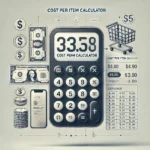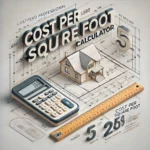Uncover the meaning of unit rate and its practical uses. Gain insights into calculating unit rates to enhance your understanding of ratios and comparisons. Explore the definition and significance of unit rate. Understand how to compute unit rates and their relevance in real-world situations and decision-making. Free Teacher guides for class studies.
 |  |  |
 |  |  |
 |  |  |
 |  |
What is a Unit Rate?
A unit rate is a ratio that compares two different quantities, providing a measure of how many units of one quantity correspond to a single unit of another. This mathematical concept is significant in various daily activities as it simplifies decision-making processes in contexts such as shopping, cooking, and budgeting. Understanding unit rates allows consumers and individuals to make informed choices and draw comparisons effectively.

What’s an Example?
For example, when shopping for groceries, consumers often encounter prices denoted per unit, such as dollars per pound or price per liter. By converting prices to unit rates, shoppers can quickly determine which product offers better value. If one brand of cereal costs $3 for a 12-ounce box, while another costs $4 for a 16-ounce box, calculating the unit rates of these products becomes essential. The first box of cereal costs $0.25 per ounce ($3/12), while the second costs $0.25 per ounce as well ($4/16). Although the total prices differ, the unit rates reveal that both options provide the same value, enabling consumers to make choices effectively.
What are some real-life uses?
Unit rates are equally significant in cooking, where recipes require careful measurement of ingredients. For instance, if a recipe calls for 4 cups of flour for 2 batches of cookies, the unit rate can help determine the required amount for varying batch sizes. By establishing the rate of flour per batch (2 cups), home cooks can easily scale their recipes according to their needs. This practical application highlights how understanding unit rates promotes efficiency and accuracy while preparing meals.
In essence, unit rates serve as a fundamental concept that cuts across various aspects of everyday life, enhancing our capacity to evaluate and compare accumulated information effectively.
Understanding Unit Rates
A unit rate is a ratio that compares two different units, where the denominator is always 1. Examples include kilometers per hour, meters per second, miles per hour, salary per month, and more. Unit rates play a significant role in both arithmetic and everyday life, as they help simplify comparisons and calculations across various scenarios.
The Role of Arithmetic in Daily Life
Arithmetic, one of the most fundamental and ancient branches of mathematics, deals with numbers and their operations. It is an integral part of our daily routines, often used consciously or unconsciously. For instance, we encounter arithmetic when buying fruits or vegetables, calculating speed, or managing finances. Learning unit conversions is an essential skill in arithmetic.
Understanding Rates and Unit Rates
In arithmetic, problems often require finding rates or unit rates to determine values such as price, speed, or efficiency. Although related, rates and unit rates have distinct definitions and applications.
- A rate compares two quantities with different units.
- A unit rate shows how many units of one quantity correspond to one unit of another.
Unit Rate Definition
A unit rate is a specific type of rate where the denominator is 1. It indicates the amount of one quantity per single unit of another. In simpler terms, the unit rate answers “how much of something per unit.”
Examples:
- 40 miles/2 hours=20 miles per hour (unit rate)40 \, \text{miles} / 2 \, \text{hours} = 20 \, \text{miles per hour (unit rate)}
- 160 words/4 minutes=40 words per minute (unit rate)160 \, \text{words} / 4 \, \text{minutes} = 40 \, \text{words per minute (unit rate)}
Common Applications of Unit Rates
Some widely recognized examples of unit rates include:
- Speed: Miles per hour, meters per second
- Cost: Price per gram, liter, or pound
- Efficiency: Words per minute, gas mileage (miles per gallon)
- Density: Grams per cubic centimeter
Practical Use of Unit Rates
Unit rates are essential for various real-world calculations:
- Distance and Time: Speed (e.g., kilometers per hour)
- Earnings: Salary per month or per hour
- Measurement Conversions: Cost per unit, fuel efficiency
By understanding and applying unit rates, you can make informed decisions and solve problems more efficiently in both practical and mathematical contexts.
The Mathematics Behind Unit Rates
Unit rates are a fundamental concept in mathematics that express the relationship between two different quantities when they are compared on a per unit basis. To correctly calculate a unit rate, one needs to take the total quantity of one item and divide it by the number of units of another item. The general formula for determining the unit rate can be expressed as:
Unit Rate = Total Quantity of Item A / Total Quantity of Item B
For example, let us consider a scenario where a vehicle travels a total distance of 300 miles over the course of 5 gallons of fuel. To find the unit rate of miles per gallon, we would apply the formula as follows:
Unit Rate = 300 miles / 5 gallons
Performing the calculation yields:
Unit Rate = 60 miles per gallon
This indicates that the vehicle can travel 60 miles for every gallon of fuel used. Understanding how to calculate unit rates is essential in various practical applications, such as comparing prices, measuring speed, or determining efficiency.
In broader terms, unit rates enable individuals to make informed decisions regarding consumption or expenditure. For instance, when shopping, consumers can compare the cost per item or per weight of different products by calculating unit rates, thereby making budget-friendly choices. Ultimately, the knowledge of unit rates stands as a valuable mathematical skill applicable in numerous real-world situations.
Real-Life Applications of Unit Rates
Unit rates play a crucial role in various real-life scenarios, simplifying the comparison between different measurements and aiding in informed decision-making. One of the most common applications is in the realm of pricing. When shopping, consumers often encounter various prices for goods and services. Understanding unit rates allows individuals to compare prices effectively. For example, when purchasing food items, the price per ounce or per pound can help determine the best value, enabling shoppers to save money and avoid overspending.
Another relevant application of unit rates is found in measuring speed. Whether one is commuting via car, cycling, or running, speed can be expressed as a unit rate, typically in miles per hour or kilometers per hour. This information is invaluable for planning travel times or assessing performance. For instance, if two different routes are available, comparing their unit rates can indicate which route is faster, allowing for more efficient travel decisions.
In the context of sports, unit rates serve to evaluate performance metrics, such as points scored per game in basketball or goals scored per match in soccer. Coaches and analysts utilize these metrics to assess players’ strengths and weaknesses, informing their strategies and training programs. The ability to calculate unit rates in sports statistics also provides fans with a better understanding of player performance and team dynamics.
Additionally, unit rates are essential in various fields, including finance and health. For example, calculating interest rates on loans involves unit rates to evaluate the cost over time, while in health, unit rates can help assess nutritional values, such as calories per serving. Mastering the concept of unit rates empowers individuals to make better choices across myriad situations, streamlining their decision-making processes and enhancing overall efficiency in daily life.
Unit Rates vs. Other Rates
Understanding unit rates is essential for making informed decisions in various aspects of daily life, particularly when comparing costs and values. A unit rate is defined as a comparison of two different quantities, expressed in a fraction where the denominator is one. This allows for easier comparison and analysis of different items or services. In contrast, ratios represent a relationship between two quantities and can be expressed in various forms but do not necessarily simplify to a single unit. For example, a ratio of 3 to 4 simply indicates a relationship without providing a definite unit measure.
Moreover, percentages serve as a relative measure that expresses a quantity in relation to 100. Although both percentages and ratios can provide useful information about proportions and relationships, they lack the specificity that unit rates provide. When comparing prices, for instance, a unit rate allows consumers to see the cost of one item, making it immediately actionable. For example, knowing that a 12-ounce bottle of soda costs $3 translates to a unit rate of $0.25 per ounce, giving a clear and direct understanding of cost efficiency compared to other sizes or brands.
Unit rates are particularly beneficial in various scenarios, such as grocery shopping, cooking, or any comparison involving distance and speed. By standardizing values, unit rates transform complex comparative assessments into straightforward calculations. For instance, when comparing fuel efficiency, a driver can quickly evaluate miles per gallon as a unit rate, allowing for informed choices between vehicles. In situations where multiple comparative rates exist, it becomes apparent that utilizing unit rates simplifies analysis and decision-making significantly.
In conclusion, while ratios and percentages hold their importance in measuring relationships and proportions, unit rates provide a precise and practical tool for evaluation and comparison in everyday scenarios. By emphasizing simplicity and clarity, unit rates emerge as a preferred method of comparison in many situations.
How to Determine Unit Rates from Complex Situations
Determining unit rates from complex situations can be challenging, but with a structured approach, it becomes manageable. The first step is to clearly define the quantities involved. Identifying which values correspond to the items you are comparing is essential. For instance, if you are trying to find the unit rate of miles per hour for a trip that varied in distance and time, pinpoint the total miles traveled and the total hours spent. Once these values are established, you can proceed with the calculation.
Next, simplifying the problem can greatly enhance your understanding. Break down any complex situations into smaller, more manageable parts. For example, if you encounter a scenario where different speeds are involved over multiple intervals, consider calculating the unit rate for each interval separately and then averaging those results if needed. This method helps prevent confusion and ensures accuracy in your calculations.
Another effective strategy is the use of ratios. Express the quantities in a ratio format, as this provides a clearer view of the relationship between the numbers. For example, when determining the cost per item in a bulk purchase, create a ratio that compares the total cost with the number of items. Once in this format, simplifying the ratio will lead you to the unit rate. Always remember that the unit rate reflects a specific quantity (the numerator) per one unit of another quantity (the denominator), which aids in maintaining clarity during computations.
Lastly, verification of your results is crucial. After arriving at a unit rate, consider cross-referencing your answer with the initial conditions of the problem. Doing so helps ensure the rate you calculated accurately reflects the relationship between the quantities involved. Through careful breakdown and strategic simplification, determining unit rates in complex situations can be achieved with precision.
Practicing with Unit Rates
Developing a strong understanding of unit rates is essential for applying mathematical concepts in real-life situations. To facilitate this learning, here are various practice problems that encapsulate different difficulty levels and scenarios, ensuring a comprehensive grasp of unit rates.
Begin with basic calculations to solidify foundational knowledge. For example, consider a scenario where a shopper buys 4 apples for $2. In this case, ask yourself: what is the cost per apple? To find the unit rate, simply divide the total cost by the quantity purchased. Thus, the unit rate is $2 ÷ 4 = $0.50 per apple. Additional problems in this category could include calculating the cost per gallon of gas when the price is $3.60 for 12 gallons. This straightforward approach will enhance your comfort with fundamental unit rate calculations.
Next, transition to intermediate problems that introduce different contexts. For instance, if a car travels 150 miles using 5 gallons of gas, determine the miles driven per gallon. This can be calculated by dividing the total miles by the gallons of gas used, yielding a unit rate of 30 miles per gallon. Another engaging problem may involve comparing speeds, such as determining the unit rate of 120 miles covered in 3 hours, yielding a pace of 40 miles per hour.
Lastly, challenge yourself with applied problems that require critical thinking. Consider a recipe that calls for 2 cups of flour to make 12 cookies. Ask yourself, how many cups of flour are needed for just 3 cookies? This inquiry necessitates calculating the unit rate for flour per cookie, leading to a practical application of unit rates in cooking. Practicing problems across these levels will foster a deeper comprehension of unit rates and enhance decision-making in everyday contexts.
Common Mistakes When Calculating Unit Rates
Calculating unit rates can often lead to misunderstandings and errors, particularly for those who are new to the concept. One prevalent mistake is failing to ensure both quantities are measured in the same unit before proceeding with the calculation. For instance, when comparing prices of products sold in different measurements, such as ounces versus grams, individuals may mistakenly rush to conclusions without appropriate conversions. This oversight can significantly alter the accuracy of the unit rate being calculated.
Another common error is neglecting to reduce ratios to their simplest form. When individuals calculate unit rates, they sometimes list the rates without simplifying them, which complicates comparisons across different items. For example, a snack pack costing $4.50 for 12 ounces would yield a rate of $0.375 per ounce when simplified. However, if presented in its original form, the information may mislead someone into believing that a higher price must be a better deal, triggering misinformed purchasing decisions.
Furthermore, many people misinterpret the context when comparing unit rates. It is crucial to consider nuances such as quality or size, which can lead to misleading conclusions about value. For instance, a cheaper per-unit price doesn’t necessarily indicate better overall value if the product sizes differ or if a higher-cost item offers considerably higher quality or quantity. Not focusing on these aspects can discredit the purpose of calculating unit rates altogether.
To avoid these pitfalls, one should always double-check that all units match, ensure simplification of ratios, and maintain a broader understanding of what is being compared. By being vigilant about these common mistakes, individuals can ensure their calculations are accurate, significantly improving their decision-making processes related to purchasing and consumption.
Teaching Unit Rates to Others
Teaching unit rates effectively requires a clear and structured approach to ensure that students or individuals unfamiliar with the concept can grasp its significance. Start by introducing the basic definition of a unit rate, which is a ratio that compares a quantity to one unit of another quantity. For example, if a car travels 300 miles on 10 gallons of fuel, the unit rate is 30 miles per gallon. This initial explanation sets the foundation for the concept.
Utilizing visuals can greatly enhance understanding. Consider using diagrams, such as bar models or tables, to represent various unit rates. These visuals provide a tangible way for learners to visualize how different ratios can be simplified to a common unit. Additionally, using real-world scenarios helps make unit rates relatable; for instance, discuss pricing of products in a grocery store, such as cost per item or cost per weight, which emphasizes the practical application of unit rates in everyday life.
Engaging activities can reinforce understanding further. One effective strategy is to incorporate hands-on activities, such as measuring ingredients in a recipe to calculate the unit rate of each ingredient used per serving. This not only reinforces mathematical concepts but also encourages collaboration and interaction among students. Another activity includes comparing rates of speed, such as distance traveled in different time frames, which promotes critical thinking and application of unit rates in a dynamic context.
Lastly, encourage questions and discussions as they allow learners to express confusion and seek clarification. Open discussions can lead to the discovery of innovative explanations and solutions among peers, thereby increasing engagement and understanding. By applying these teaching strategies, visuals, and activities, one can effectively communicate the concept of unit rates and its applications in a clear and engaging manner.
Conclusion: The Importance of Mastering Unit Rates
Unit rates are a fundamental concept that play a significant role in various aspects of life, impacting areas such as personal finance, academic achievement, and everyday decision-making. Mastering unit rates equips individuals with the necessary skills to make informed choices, ultimately leading to better outcomes in financial planning and time management. By understanding the correlation between quantities, individuals can evaluate prices, assess value, and compare options more efficiently.
In personal finance, unit rates are instrumental in budgeting and evaluating expenses. For instance, when shopping, knowing the unit price of groceries can enable consumers to select more cost-effective products without compromising quality. This skill extends to other facets of finance, such as determining cost-per-use for items like memberships or subscriptions, which aids in making sustainable financial decisions. Thus, a solid grasp of unit rates empowers individuals to maximize their resources, avoid overspending, and effectively manage their budgets.
Academically, unit rates serve as a valuable tool for problem-solving in subjects such as mathematics and science. Proficiency in this area not only enhances analytical skills but also aids in grasping complex concepts that may arise in higher education. Students who regularly practice and apply their knowledge of unit rates often find themselves better prepared for standardized tests and real-world applications of their learning.
Unit rates manifest in daily life situations, from calculating speed and efficiency to understanding recipe proportions. Developing a keen sense of unit rates fosters critical thinking and enhances decision-making capabilities, leading to successful outcomes across numerous scenarios. Therefore, embracing and practicing unit rate skills is integral to achieving overall success in both personal and academic pursuits. Mastery of this concept will undeniably provide individuals with valuable insights that can be applied throughout their lives.
Useful Resources For Unit Rates
BYJUS.com Unit Rate Page
Calculator Soup Unit Rate Page